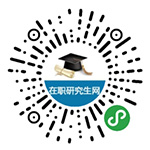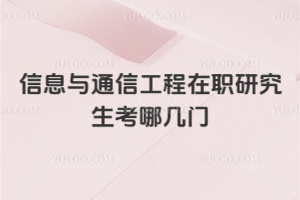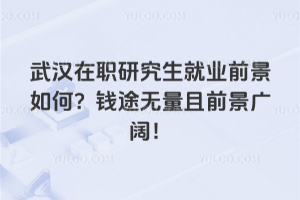- 微信公眾號(hào)

政策解讀
- 微信小程序

快速擇校

政策解讀

快速擇校
Libraries form a vital part of the world’s systems of communication and education. They make available knowledge accumulated through the ages. People in all walks of life use library resources in their work. People also turn to libraries to satisfy a desire for knowledge or to obtain material for leisure-time activity. In addition, many people enjoy book discussions, concerts, film programs, lectures, story hours, and a variety of other activities provided by libraries. Libraries also play an important role in preserving a society’s cultural heritage(遺產(chǎn)). The library ranks as one of society’s most useful service institutions.
The contents of libraries have changed so much through the years that the word library itself is, in a sense, inaccurate. The word comes from the Latin word liber, which means book. Today’s libraries house many books, of course. However, they also have a wide variety of other materials that communicate, educate, and entertain. These materials include magazines, manuscripts(手稿), newspapers, and computer documents. Audio and visual materials include CDs, audiocassette tapes, videotapes, films, maps, paintings, and photographs.
In addition to regular books, a library may have large-type books, books for the blind, and tape recordings of books, called talking books. Librarians keep pace with the changing contents of libraries to serve as many people as possible. Their efforts have turned libraries into multimedia resource centers.
The expansion of library contents greatly increases the library’s ability to communicate and educate. For example, people interested in classical music can listen to CDs and read books on the topics. Students of agriculture can read magazines and watch videotapes on farming methods. Many people use magazines and newspapers to find the most up-to-date material on current events.
In addition to expanding contents, librarians have developed many kinds of libraries to serve the needs of different people. The materials of each kind of library are selected to meet the needs of a specific group of patrons. School libraries have collections that provide the information needed by elementary and high school students. Public libraries tailor their collections to the general public. Government library collections are geared chiefly toward serving the needs of government officials. Thousands of special libraries provide information for professional people, such as advertising specialists, bankers, editors, engineers, lawyers, physicians, and scientists.
1.The word library originally meant ______
A.freedom from ignorance
B.collections of books
C.means of communication
D.storage of knowledge
2.Which of the following statements shows libraries nowadays serve as multimedia resource centers?
A.People can visit them at their convenient time.
B.People can learn about different cultures in them.
C.They house educational and recreational materials in a variety of forms.
D.They provide information for professional people in different fields.
3.Including talking books in their collections is a good example of ______
A.the expansion of the contents of libraries
B.the development of special libraries
C.the entertaining function of libraries
D.the recording service in libraries
4.In the last paragraph, the word “patrons” probably means _______
A.professional people
B.a(chǎn)cademic researchers
C.librarians
D.readers
5.The information provided in this passage may help us ______
A.make better use of the library as a useful service institution
B.pay more attention to up-to-date news provided in libraries
C.better understand librarians and appreciate their hard work
D.save more time for entertainment in library activities
參考答案及解析:
1. B。細(xì)節(jié)題,答案在第二段The word comes from the Latin word liber, which means book.
2. C。細(xì)節(jié)題。第二段和第三段中提到圖書(shū)在內(nèi)容上和形式上都很豐富。內(nèi)容上有關(guān)于教育的和娛樂(lè)的,形式多種多樣,有文本的,視頻的,還有專門(mén)為盲人準(zhǔn)備的書(shū)籍的等。
3. A。細(xì)節(jié)題。在第三段In addition to regular books, a library may have large-type books, books for the blind, and tape recordings of books, called talking books.此題可用排除法,B項(xiàng)在第五段,C、D兩項(xiàng)不對(duì),所以選A。
4. D。猜詞題。The materials of each kind of library are selected to meet the needs of a specific group of patrons每一種類(lèi)型的圖書(shū)館的書(shū)的選取要滿足不同群體讀者的需求。
5. A。主旨題。文章主要介紹了圖書(shū)館的作用,內(nèi)容和形式,目的是要讀者對(duì)圖書(shū)館有一個(gè)更加深入的了解,從而能夠更加合理的運(yùn)用它為自己服務(wù)。
特別聲明:①凡本網(wǎng)注明稿件來(lái)源為"原創(chuàng)"的,轉(zhuǎn)載必須注明"稿件來(lái)源:育路網(wǎng)",違者將依法追究責(zé)任;
②部分稿件來(lái)源于網(wǎng)絡(luò),如有侵權(quán),請(qǐng)聯(lián)系我們溝通解決。

信息與通信工程在職研究生若通過(guò)同等學(xué)力申碩方式,入學(xué)無(wú)需考試。申碩階段考試一般考外語(yǔ)(如英語(yǔ)、法語(yǔ)等)和專業(yè)課(涵蓋信號(hào)與系統(tǒng)、通信原理等)。考試通過(guò)標(biāo)準(zhǔn)為及格...

電氣工程在職研究生若通過(guò)同等學(xué)力申碩方式,學(xué)費(fèi)一年在1.4萬(wàn)-1.79萬(wàn)元左右(學(xué)制多為2年)。如華北電力大學(xué)學(xué)費(fèi)3萬(wàn)元,平均一年1.5萬(wàn)元;河北工業(yè)大學(xué)學(xué)費(fèi)2...

武漢在職研究生就業(yè)前景良好,錢(qián)景也頗為可觀。同等學(xué)力申碩入學(xué)門(mén)檻低,畢業(yè)后學(xué)位證受認(rèn)可,利于晉升漲薪;非全日制研究生學(xué)歷學(xué)位雙證在考公、國(guó)企招聘等中優(yōu)勢(shì)明顯。不...

本文匯總北京多所高校在職研究生招生簡(jiǎn)章,為職場(chǎng)人士提供全面報(bào)考指南。深入解析招生政策、報(bào)考條件及學(xué)習(xí)優(yōu)勢(shì),幫助您把握職業(yè)發(fā)展機(jī)遇。錯(cuò)過(guò)招生信息可能影響晉升機(jī)會(huì),...

在職醫(yī)生報(bào)考醫(yī)學(xué)在職研究生需全面了解報(bào)考流程和條件。報(bào)考流程包括選擇院校、在線報(bào)名、提交材料、參加考試等步驟,需關(guān)注各階段時(shí)間節(jié)點(diǎn)。報(bào)考條件涉及醫(yī)學(xué)相關(guān)本科學(xué)歷...

企業(yè)管理在職研究生好找工作嗎?是否好找工作,取決于多種因素。數(shù)字化使管理能力迭代,行業(yè)需求分化,核心能力升級(jí)。其就業(yè)有政策與市場(chǎng)認(rèn)可等優(yōu)勢(shì),院校、經(jīng)驗(yàn)與學(xué)歷匹配...
在職研究生
入學(xué)考試
在職研究生
有用嗎
在職研究生
如何報(bào)考
在職研究生
報(bào)考流程
在職研究生
報(bào)名條件
在職研究生
學(xué)費(fèi)一覽表
在職研究生
考哪些科目
在職研究生
怎么報(bào)名
在職研究生
一年考幾次
評(píng)論0
“無(wú)需登錄,可直接評(píng)論...”